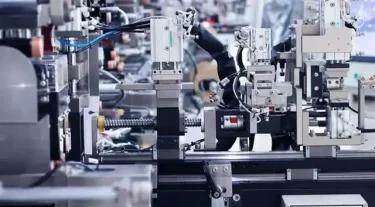
# Tape Production: Processes and Techniques in Manufacturing
## Introduction to Tape Manufacturing
Tape production is a specialized manufacturing process that involves creating adhesive-backed materials for various applications. From everyday household uses to industrial applications, tapes play a crucial role in modern life. The manufacturing process combines material science, chemical engineering, and precision machinery to produce high-quality adhesive products.
## Raw Materials in Tape Production
The foundation of tape manufacturing lies in selecting the right raw materials:
The primary components include:
- Backing material (paper, plastic, cloth, or foil)
- Adhesive compounds (rubber-based, acrylic, or silicone)
- Release liners (for pressure-sensitive tapes)
- Additives and coatings for special properties
## Core Manufacturing Processes
### 1. Backing Material Preparation
The first stage involves preparing the base material. For plastic tapes, this typically means extruding polymer films to the desired thickness. Paper and cloth backings undergo specific treatments to enhance strength and adhesive compatibility.
### 2. Adhesive Application
Coating Methods
Manufacturers use several techniques to apply adhesives:
- Direct coating: Applying adhesive directly to the backing
- Transfer coating: Applying adhesive to a release liner first
- Hot melt coating: Using heated adhesive formulations
### 3. Drying and Curing
After application, the adhesive must be dried or cured. Solvent-based adhesives require evaporation, while water-based formulations need controlled drying environments. UV or heat curing may be used for certain adhesive types.
### 4. Slitting and Rewinding
The continuous web of coated material is then precision-slitted into various widths using rotary blades. The finished rolls are wound onto cores with specific tension controls to prevent deformation.
## Specialized Tape Production Techniques
### Pressure-Sensitive Tape Manufacturing
This common tape type uses a carefully balanced adhesive system that sticks upon light pressure. The manufacturing process includes applying a release coating to the opposite side of the backing material to prevent self-adhesion when rolled.
### Double-Sided Tape Production
Unique Challenges
Creating double-sided tapes requires:
- Precise adhesive application on both sides
- Intermediate release liners during production
- Special handling to prevent contamination
### Specialty Tapes Manufacturing
High-performance tapes for electrical, medical, or aerospace applications often require additional processes like:
- Lamination of multiple layers
- Precision die-cutting
- Clean room production environments
## Quality Control in Tape Production
Maintaining consistent quality involves:
- Adhesion strength testing
- Thickness and width measurements
- Temperature and humidity resistance checks
- Long-term aging tests
## Environmental Considerations
Modern tape manufacturing focuses on sustainability through:
- Water-based adhesive formulations
- Recyclable backing materials
- Energy-efficient drying systems
- Waste reduction initiatives
## Future Trends in Tape Production
The industry continues to evolve with:
- Bio-based adhesive development
- Smart tapes with embedded sensors
- Advanced nanotechnology applications
- Automated production monitoring systems
Tape manufacturing remains a dynamic field that combines traditional techniques with cutting-edge innovations to meet the growing demands of various industries.
Keyword: tape manufacturing